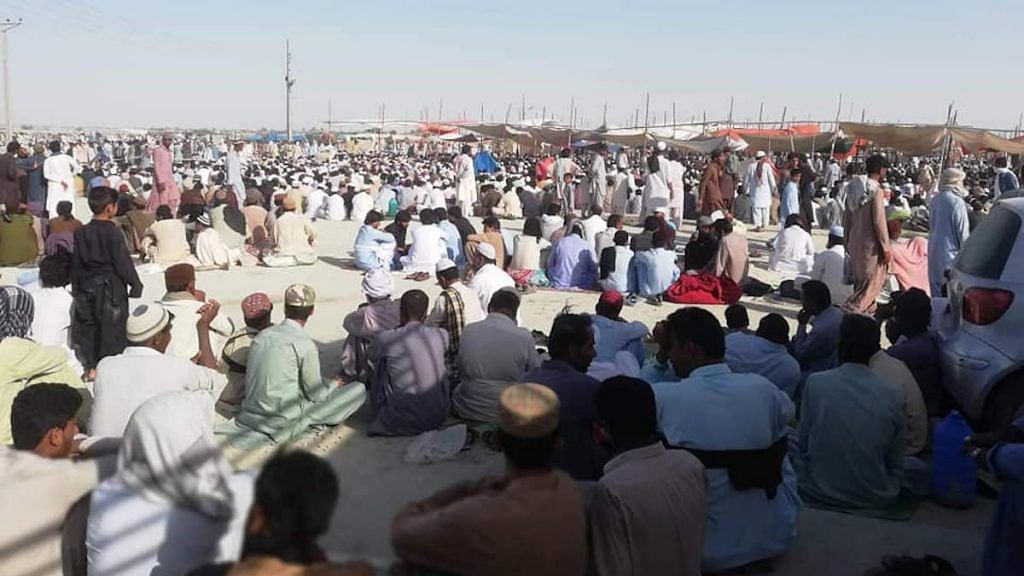To paraphrase a popular saying, you can take the Tablighi Jamaat out of India but you cannot take India out of the Tablighi Jamaat. No matter where its members go, their values, their fundamentals remain unaltered. Their strategy to woo nominal Muslims remains the same too. A living embodiment of what the organization, which originated in Mewat in north India, stands for, comes from Raiwind, just off Lahore in Pakistan. The site of the annual ijtema in the country, it attracts millions of the faith from far and near, all wedded to the six principles of the parent body.
Modify the language somewhat, and you get the Pakistani version of the Made in India Tablighi Jamaat – the same josh, the same desire to be true Muslims following the ways of the Prophet while endeavouring to uphold the Sunnah, the same concentration on gasht, and the same fascination with chilla or self-transformative, self-financed tours to mosques in other cities. In Pakistan too, men monopolize the mosques. The women, few and far between, remain hidden from the public gaze. They do dawah at home or in the neighbourhood.
Also read: Like India, Pakistan has a Tablighi Jamaat Covid-19 problem too. But blame Imran Khan as well
Unassuming Nature
Volunteers go to the mosque. They go on gasht, inviting the faithful to the masjid for five daily prayers. Even as they do so, a group member stays in masjid, praying to Allah for their success. This khalwat tradition of a man staying in the mosque while other members of the touring party spread out is borrowed from Sufism, which has a firm foothold in the country, notably in Punjab and Sindh. Once the newcomers join the masjid, the training is not as rigorous as in India. Most of the men already know how to perform wudu and offer prayers. Where the Tablighi Jamaat steps in is to help add elements of Sunnah to the actions. They introduce the newcomers to the use of miswak five times a day, and teach them the desirability of counting beads after Fajr and Asr prayers.
Like in India, once a man is reasonably regular at prayers, he is groomed to go out on religious tours. Beginning with three days, the idea is to enable the man to undertake a four month-long chilla within a year. But it is far from easy. More so, because the trips are self-financed. Indeed, for all the help and monetary aid that flows into the country from abroad, notably Saudi Arabia, the organization is reliant on individual donations for expenses. The process of grooming an adherent can hardly be completed without the constant recitation of passages from the Fazail-e-Amal. In Pakistan too, this book is now very much in the public domain. Translated into every major language of the country, the nine-volume work is synonymous with the organization.
Here too the Tabligh maintains its unassuming nature, almost like it works despite itself. It is without a doubt the largest organization in Pakistan, yet the men carry no airs, assume no privileges. The negation of the self remains paramount in the public sphere too. The emphasis is on dawah or da’wa which has been the raison d’être of the nearly century-old body.
The Tablighi Jamaat’s methodology in Pakistan is a straight lift from the pages of the life of Maulana Ilyas. Incidentally, its last president, Haji Abdul Wahab, was born in India, and met Ilyas in 1944. Wahab was twenty-two then. There have been others like Maulana Muhammad Yousuf, the second ameer of the Tablighi Jamaat who actually breathed his last after giving a talk in Raiwind. He maintained close links between Raiwind and Nizamuddin. As did Maulana Zubair, a member of the first shura formed in 1995. He used to lead the final day’s supplication in the Raiwind ijtema just as he did at the Bhopal and Dhaka congregations. This close connection with Nizamuddin explains the same rigidity of methodology, the same concentration to not only behave like a Muslim, but also look like one.
Also read: Tablighi Jamaat will have to change its ways in post-Covid world order
Apolitical or Political?
In the first decade or so after the formation of Pakistan, what facilitated the growth of the Tablighi Jamaat in the country was its apolitical nature – completely unlike that of the Jamaat-e-Islami, which participated in elections and sought representation in various legislative bodies. The Jamaat wanted a political voice and to use the tools of the system to propagate its message. In contrast, the Tabligh contested no elections and made no overtures towards any political party, coming across as an organization not seeking the fruits of democracy in the emerging nation.
However, over the following decades, things changed. By the 1980s, the Tabligh’s influence was known to one and all. It developed close ties with a number of politicians in the 1990s, including the family of former Prime Minister Nawaz Sharif, whose father was known to be a generous donor to the organization, making it practically impossible for it to stay absolutely neutral. When Sharif was prime minister, a number of politicians who had links with the Tablighi Jamaat rose to prominence.
It is also alleged that when Benazir Bhutto succeeded Sharif, the Tabligh conspired to overthrow her government as she was not indulgent towards Islamist causes, and regarded the organization as a source of orthodoxy. The Tablighi Jamaat has rejected any allegation of its role in attempting to overthrow her government, but the allegation still sticks.
